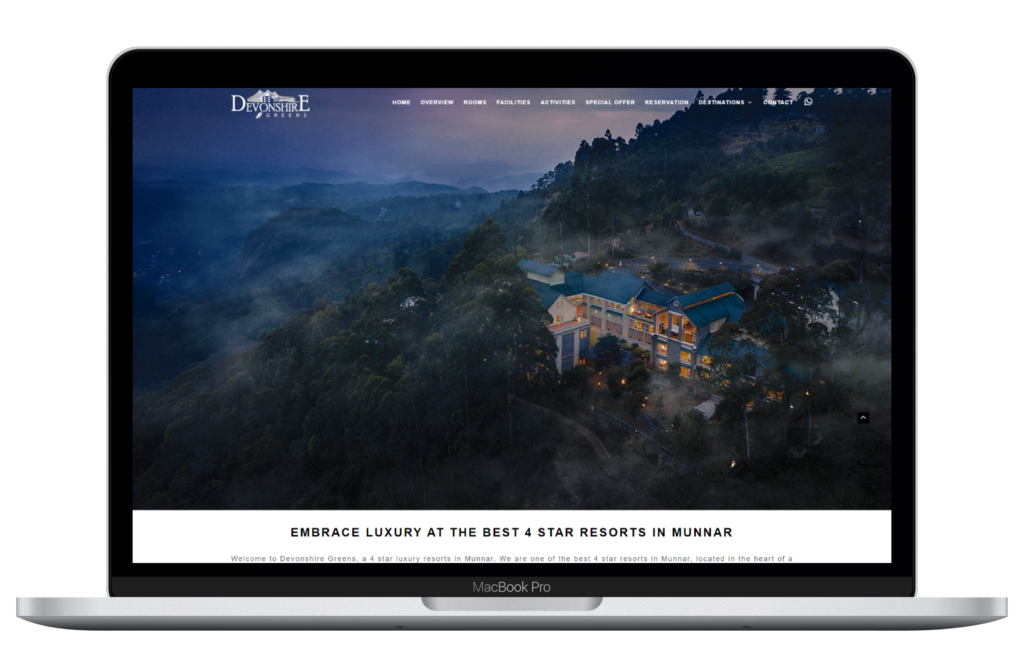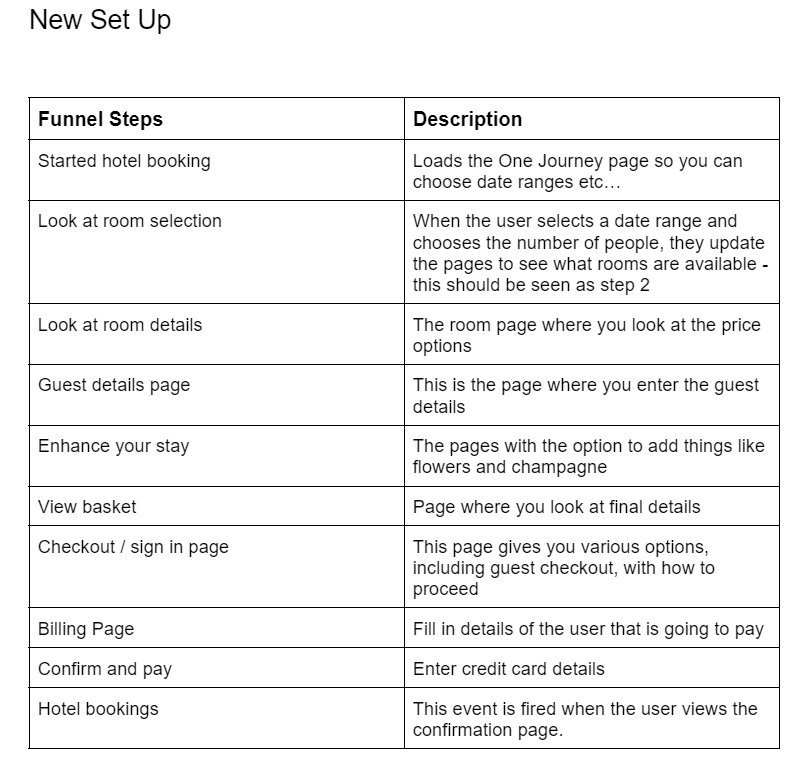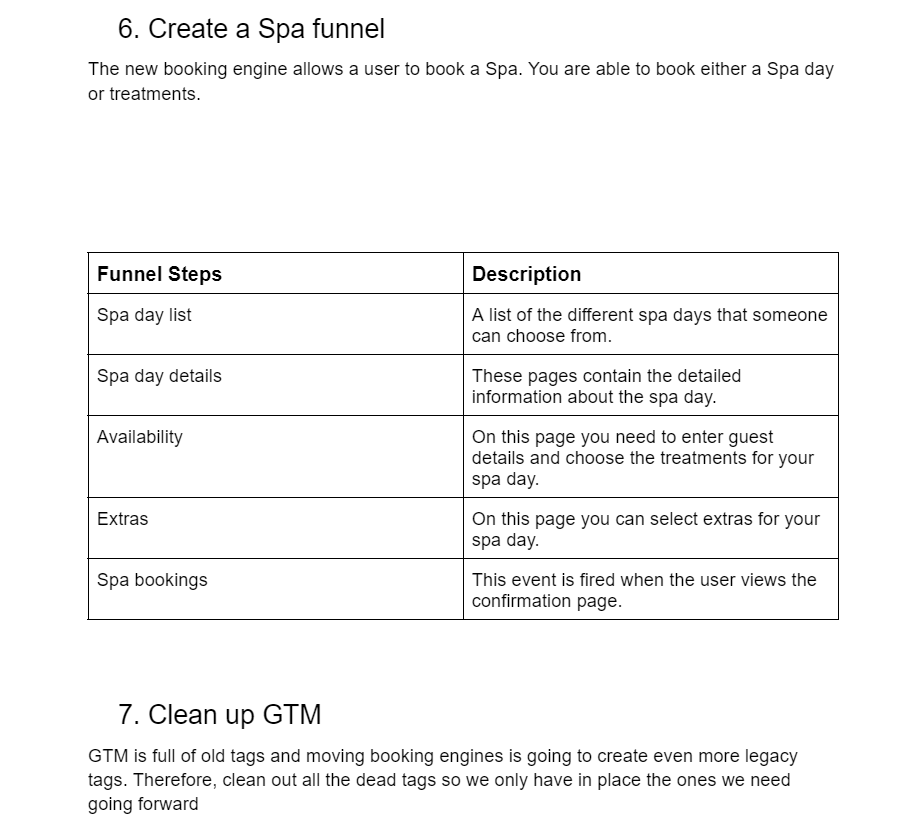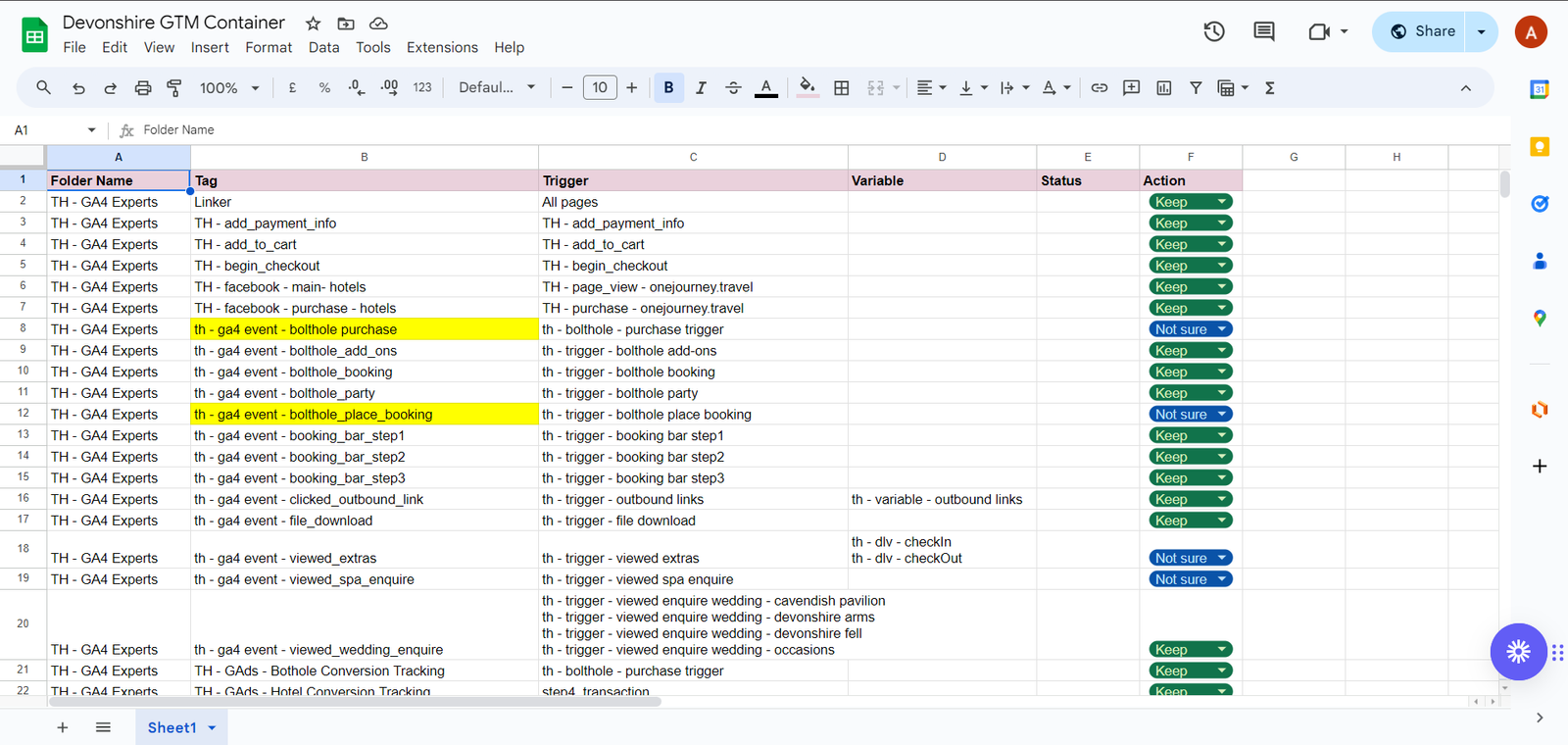Case Study - Devonshire
AUDIT
Purpose of audit
The audit was divided into two sections or phases, each with clear, defined objectives as follows:

Phase 1
Firstly, note the following fundamental details:
- There are five types of bookings: Hotels, Boltholes, Spa, and Wedding inquiries.
- The five hotels are The Devonshire Arms at Bolton Abbey, Devonshire Fell, The Cavendish Hotel, The Devonshire Arms at Beeley, and The Pilsley Inn.
The audit aimed to:
- Track bookings through their respective booking engines.
- Monitor CTA buttons separately for each action to determine the click-through rate, including Wedding inquiries, call button clicks, and availability checks.
- Map the customer journey for each category: Spa, Boltholes, Wedding inquiries, Rooms, and Restaurants.
Phase 2
Next, the focus shifted to:
- Update eCommerce tags to align with the new booking engine.
- Clean up the GTM container by deleting or pausing unnecessary tags.
- Resolve issues with conversion tracking for Facebook and Google Ads.
Audit process
Below are the steps taken to extract insights and identify friction points in the process:
- Audit the existing GTM implementation.
- Review all existing tags within GTM and events in GA4.
- Check cross-domain settings, referral exclusions, and internal traffic.
- Analyze GA4 reports to identify data discrepancies.
- Identify and document all issues.
Audit findings
The audit revealed several key issues, including:
- Referrals were not excluded, necessitating the exclusion of payment gateways.
- The session timeout duration was set too short.
- The data retention period was limited to 2 months.
- Ecommerce-level data was missing.
Implementation
Here is a strategic breakdown of how we addressed the audit observations to fulfill its initial goals and expectations for each phase:
Phase 1
- Mapped out the user journey.
- Identified funnel steps for each booking category and implemented the necessary tags.
- Configured tags for CTA buttons, including the live chat widget and call_now.
- Set up item-level custom metrics and dimensions to capture details such as the number of nights, booking dates, start and end dates, number of guests, and hotel names.
- Implemented conversion tracking for Facebook and Google Ads.
- Performed extensive testing.
- Published the updated container.
Phase 2
- Updated the booking engine for hotels, spa, and restaurant bookings.
- Set up new tags for the booking journeys of hotels, spas, and restaurant purchases.
- Implemented common e-commerce tags to collect data from four different websites.
- Updated conversion tracking for Facebook and Google Ads.
- Excluded restaurant bookings from conversions, since they do not contribute to the overall booking price.
- Revised funnel configurations.
Results
The collected data was effectively represented in Looker Studio reports, organized into two main structures:
- Category-Level Reports: Focused on bookings across hotels, spas, and restaurants.
- Website-Level Reports: Analyzed data for individual sites such as Devonshire Arms, Fell, Cavendish, and others.
These reports provided insights into various aspects, including:
- Channel performance for each booking category.
- Conversion rates for different websites.
- Item-level details, including customer e-commerce paths and drop-off points.
- Cross-website analysis and identification of popular sold-out items.







